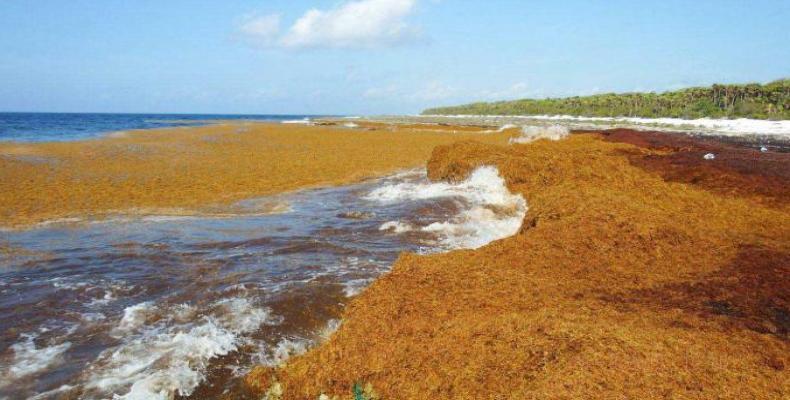Havana, August 26 (RHC)-- The "invasion" of gulfweed that in recent times has triggered alarms in much of the Caribbean shores is also affecting the Guanahacabibes peninsula in the westernmost province of Pinar del Rio.
Since 2015, the western tip of Cuba has been reporting a significant increase in this brown seaweed, which has twice led to the massive death of fish.
Lazaro Marquez, director of the Guanahacabibes National Park, explained to Granma newspaper that two species of the family Phaeophyceae are the ones being spotted and that there is no definitive criterion on the causes of this phenomenon.
"Among the theories considered are that this is due to rising temperatures resulting from climate change. Other researchers think that this is related to alterations in the distribution pattern of ocean currents and predominant winds, and there are also those who relate the phenomenon to the increase in nutrients that reach the sea through rivers, including nitrogen fertilizers,” Marquez said.
According to the specialist, the monitoring program of the peninsula’s typical flora and fauna has demonstrated that the effects produced in coastal areas have an effect on the processes related to species such as sea turtles.
In addition, they have been affecting coral reefs and sea grasses, two of the most important ecosystems for the development of underwater life.
The expert said that the presence of gulfweed in the territory is a common occurrence, especially between April and July, but the enormous quantities arriving is vry unusual.
"So far in 2019, systematic monitoring has made it possible to determine the early appearance of large volumes since February, which is unprecedented, with an alarming increase in places where it had not been reported, particularly in the coastal sector extended from La Bajada to Cabo Corrientes," says Marquez.
Some beaches in Guanahacabibes have formed banks up to 1.4 meters high, which hinder the arrival of turtles to nest.
In order to mitigate the problem, the park's specialists have opted to open gaps about two meters wide so that the animals can come in to lay their eggs and come out again.
Faced with this situation, an early warning system has been structured throughout the area to obtain updated information with the help of staff from Border Troops, the Forest Ranger Corps, the forestry company and park rangers.
In addition, the protected area's specialists are carrying out systematic monitoring, through explorations of various sites on the peninsula, in order to document and assess the full magnitude of the scope and consequences of this event.
Marquez noted that even though in the last few weeks there has been a decrease in the arrival of the gulfweed the Guanahacabibes peninsula is experiencing an anomalous process, with temporal fluctuations, which could increase again with intensity at any time.


